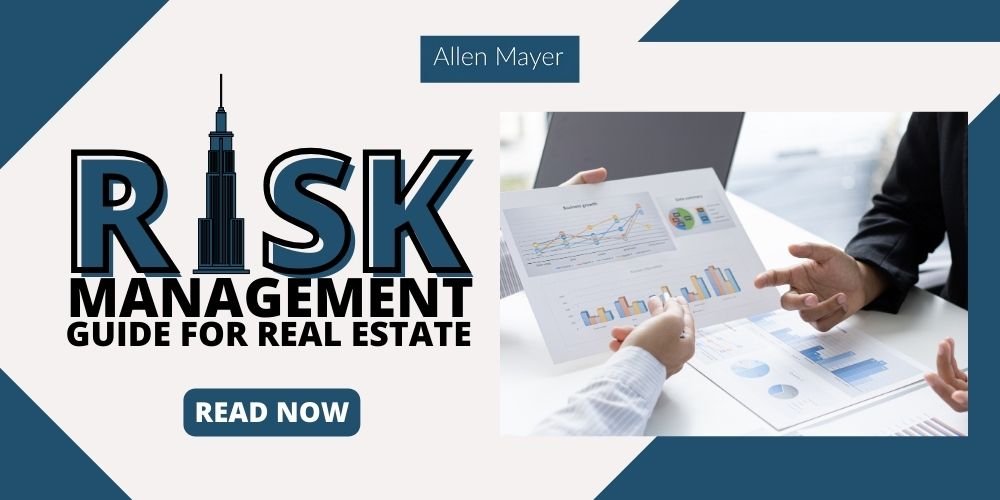In real estate, the potential for profits is high—and so are the risks. You need a savvy understanding of risk management to succeed in this field. Otherwise, you’re working to fail.
Fortunately, you don’t need to be an expert to get informed. Whether you’re a seasoned investor or just dipping your toes into the market, this guide will cover everything you need to know about real estate risk management.
Types of Risk
Real estate investments involve significant financial commitments. Being aware of potential risks helps you plan and budget more effectively, reducing the likelihood of financial setbacks.
Here are four common types of risks in real estate:
- Financial risk. Don’t underestimate costs! A poorly analyzed investment can bleed cash through vacancies, repairs, and hidden expenses.
- Liquidity risk. Your money might get stuck. Slow markets, unpopular properties, or economic woes can slow down and decrease your sales.
- Interest rate risk. Central bank decisions, economic factors, and the buyer’s financial history can lead to rising or falling interest rates. This can impact the cost of mortgages or loans associated with a property investment.
- Market risk. Booms and bust cycles, changing demographics, and even disasters can impact property values.
Identifying and Assessing Risks
Risk management is an ongoing process—not a one-time thing. By keeping an eye out for signs and red flags, you can increase your chances of success and minimize risks.
Here’s how to identify and assess risks in two steps:
- Brainstorm. Gather input from team members, experts, and affected parties about internal and external factors that could disrupt your plans. Consider financial, operational, technological, environmental, reputational, and competitive risks.
- Analyse. Evaluate the likelihood and impact of each risk with a risk matrix or scoring system. Examples of these are probability or impact matrix and Failure Mode and Effects Analysis (FMEA).
Strategies for Risk Management
Diversification
Diversification mitigates this risk by spreading your investments across different segments and locations. Think apartments, warehouses, retail spaces, and even international ventures. This way, a slump in one segment doesn’t tank your entire portfolio.
Due Diligence
Don’t be a blindfolded investor! Before jumping into any property, perform thorough due diligence. It’s like a property-specific checkup. Scrutinize legal documents, title deeds, permits, and zoning regulations. Check for environmental hazards, structural issues, and hidden repair costs. Don’t forget market research: analyze rental/sale trends, local demographics, and potential development plans.
Continuous Education
The real estate market is like a fickle friend – moods change, trends shift. To stay ahead, continuous education is your secret weapon. Attend webinars, network with industry professionals, and devour insightful articles. Stay updated on regulatory changes, emerging technologies, and new financing models.
Leverage Insurance
Leverage insurance to shield yourself from unforeseen events like fires, floods, legal disputes, or tenant delinquencies. Choose coverages specific to your property type and location.
Adopt Technology
Embrace advanced technology like AI-powered platforms that predict market trends, analyze investment opportunities, and streamline property management. Blockchain technology can secure transactions, improve transparency, and expedite paperwork.
Importance of Proactive Risk Management
Proactive risk management is not about predicting the future; it’s about being prepared for whatever it throws your way. Here are four key reasons why you should stay informed of the risks in real estate:
- Financial Security. Proactive risk management safeguards your financial well-being by minimizing the impact of unforeseen events.
- Stability and Continuity. Proactive measures help avoid disruptions, ensuring a smoother and more consistent performance over time.
- Investor Confidence. Demonstrating a commitment to understanding and mitigating risks enhances your credibility, attracting and retaining investors for long-term partnerships.
- Adaptability to Market Changes. Proactive risk management allows you to swiftly adjust to changing market conditions, positioning your investments to capitalize on opportunities and mitigate the impact of adverse shifts.
Work With Your Broker
At times like this, you can always go right with working with a real estate expert. Real estate brokers have their finger on the pulse of the local market, pricing trends, demographics, and upcoming developments. This eases the search for the perfect property or sales. In addition, their established network with other agents, buyers, sellers, and industry professionals can expedite your search.
Allen Mayer is one of Toronto’s most experienced real estate brokers with over 25 years of expertise. He specializes in commercial real estate leasing and sales and ensures that you receive advice that is not just accurate but tailored to your needs.
Conclusion
As you set forth on your real estate journey, remember this: risks are part of the game, but they’re also manageable. By identifying, assessing, and proactively managing risks and applying risk management strategies, you safeguard your investments and pave the way for long-term success.
Ready to make your first real estate investment? Get in touch with Allen Mayer today.

